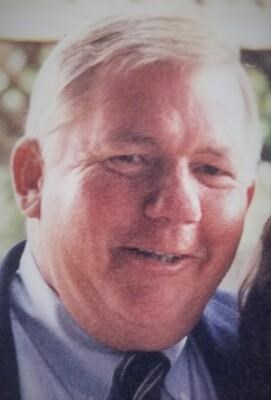|

 Richard Corrie Beals, 76, passed away on March 19, 2021 in his longtime hometown of Tucson, Arizona. Richard was born on December 17, 1944 in Chicago, Illinois but spent the vast majority of his childhood growing up in the Pasadena and Oakland areas in California. He served in the US Army in Korea during the Vietnam War after which he went on to graduate from Northern Arizona University in 1971 with a Bachelor of Science degree in Business. From there, Richard went on to work as a sales representative for US Gypsum and a variety of other materials-related manufacturers and ultimately became 'something of a bigshot developer.' He loved a good construction project, fly fishing with his friends and later, enjoyed globetrotting to explore countries he'd not yet seen. He is missed and will continue to be missed by those who knew his big heart underneath his tough exterior. Richard Corrie Beals, 76, passed away on March 19, 2021 in his longtime hometown of Tucson, Arizona. Richard was born on December 17, 1944 in Chicago, Illinois but spent the vast majority of his childhood growing up in the Pasadena and Oakland areas in California. He served in the US Army in Korea during the Vietnam War after which he went on to graduate from Northern Arizona University in 1971 with a Bachelor of Science degree in Business. From there, Richard went on to work as a sales representative for US Gypsum and a variety of other materials-related manufacturers and ultimately became 'something of a bigshot developer.' He loved a good construction project, fly fishing with his friends and later, enjoyed globetrotting to explore countries he'd not yet seen. He is missed and will continue to be missed by those who knew his big heart underneath his tough exterior.
Richard was preceded in death by his mother and stepfather, Genevieve and Norman Gay of Tucson; his father and stepmother, John and Marjorie Beals of Sedona, Arizona and his brother, John Beals. He is survived by extended and adopted family both near and far and a deep bench of friends throughout the community.
Arizona Daily Star, February 20, 2022
***********************************************
Veteran Story
US Army
February 1967 - December 1968
I got what was called a Christmas "Drop" that enabled me to return for the spring semester at Northern Arizona University
Private First Class
Advanced Infantry Training, Fort Polk, Louisiana, 81 mil mortar crew
On-the-job-training - Honest John Rocketeer, Camp Casey, Korea
Expert M-14, M-16, 45 cal pistol
Secret Clearance
Duties: Honest John Rocket Crew Member. The Honest John was a Nuclear Rocket, laughable today, but in 1968 it was the "Sunday Punch" of the 8th Army in Korea. The weapon was in violation of the then Peace Treaty with North Korea since it was clearly spelled out that there were to be no nuclear weapons on the Korean peninsula
Stationed: Camp Casey, Republic of Korea, Fort Knox, Kentucky, Fort Polk, Louisiana, Fort Bliss, Texas
I was a "Conscript," but the Army called us "Draftees"; my serial number started with "The US" which literally stands for "Un-Voluntary Service". You can see by my rank I was a "screw up" but I was the best damn Rocketeer in the Army. So good in fact, they picked me to give a Fire Power demonstration to the Secretary of the Army while he was visiting South Korea from Washington. It was quite an honor to shake the hand of the Secretary of the Army while he was surrounded by 3 and 4 Star Generals escorting him around our base at Camp Casey Korea.
I operated what was called a "Wind Set" which calculated the prevailing winds necessary to adjust the Rocket on the launcher before firing the nuclear weapon. In fact, going by the "Book", they couldn't start the count down until I gave the okay to launch based on how hard the wind was blowing. It all sounds pretty primitive today, but that's the way it was done in 1968.
Even though our mission was technically a secret because of the cease-fire treaty, everyone knew. We'd train in our section of the DMZ that divided North and South Korea. We did so because every now and then we'd fire a live dummy practice rocket, costing a million dollars apiece.
The Army had us up there for a reason. They wanted North Korean intelligence to know just exactly what they'd be up against if they decided to invade the South. Just a mile or so away the North Koreans were monitoring everything we did. Our radio communications and chat they'd listen to, and their radar would pick up the rocket in flight as it flew 40 or 50 miles downrange in a parallel direction to our sector of the DMZ.
Looking back, our real mission was a deterrent to protect the South from invasion and a little scary at times. There were over 500 live fire fights with North Korean infiltrators the year I was there, but most never made the newspapers. People were killed in North Korean ambushes set up by infiltrators in South Korea. But because of the war in Vietnam, very little was said about Korea, except the Pueblo incident.
During the Pueblo incident, the North Koreans sent an elite special forces unit of commandos and their mission was to infiltrate and kill the president of South Korea. The South Koreans killed 49 of them and took one prisoner.
I got to Korea in January 1968, 10 days before the North Koreans captured the naval intelligence ship Pueblo. I left Camp Casey on my way home the day the North Koreans let the Pueblo's crew cross "Freedom Bridge" on their way to freedom at Panmunjom.
It was quite an experience and I'm proud to have served my Country.
|